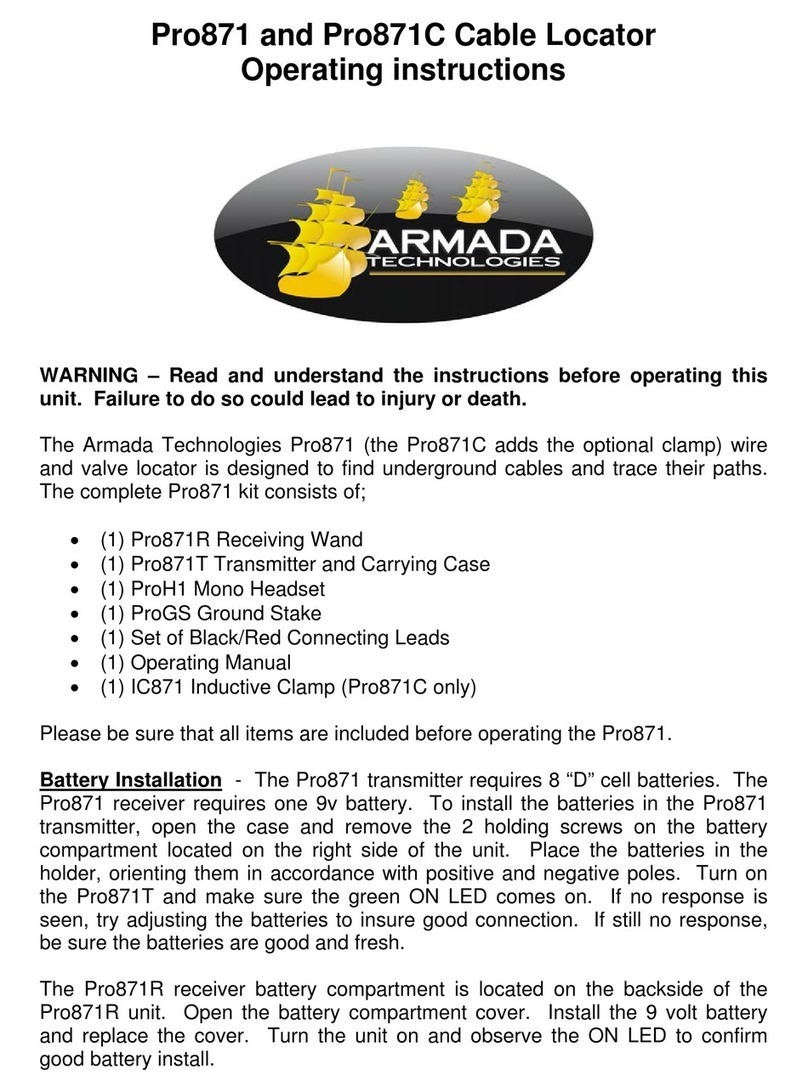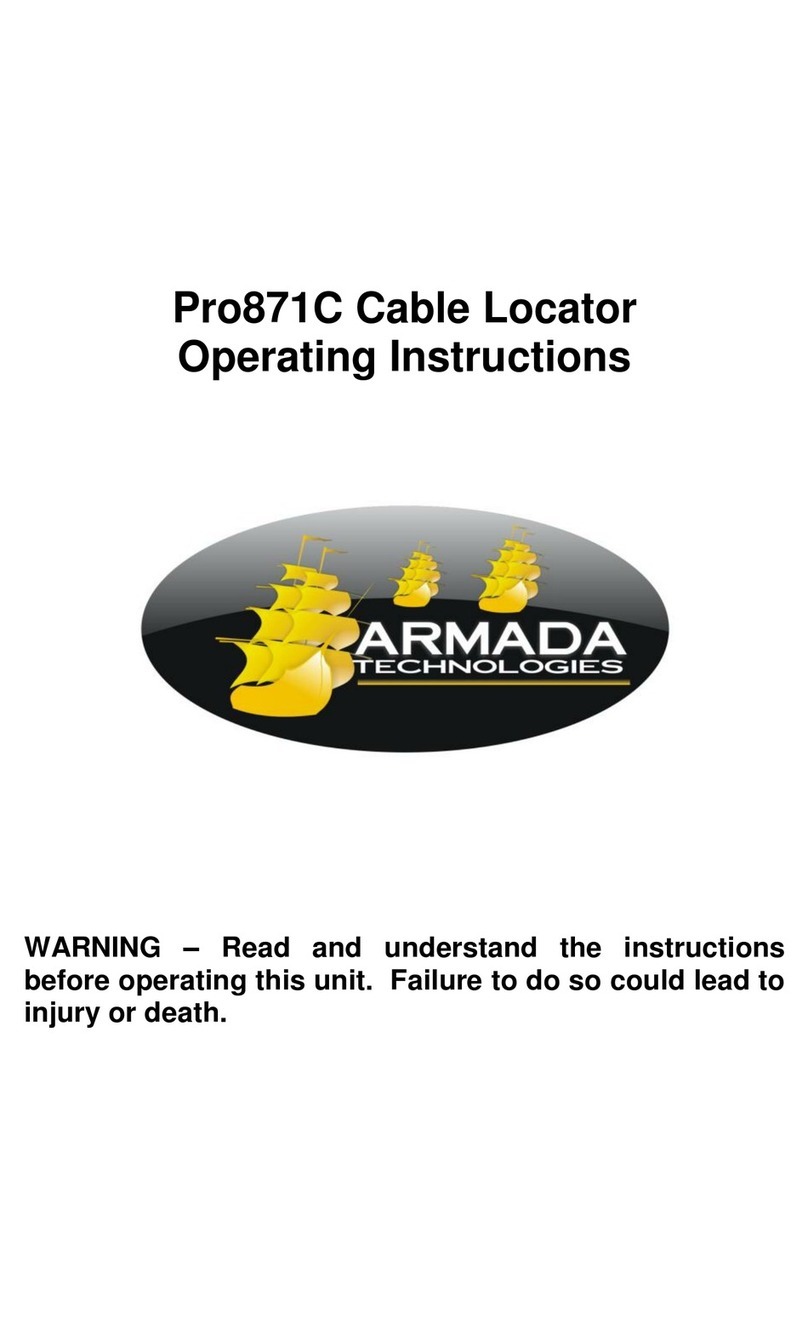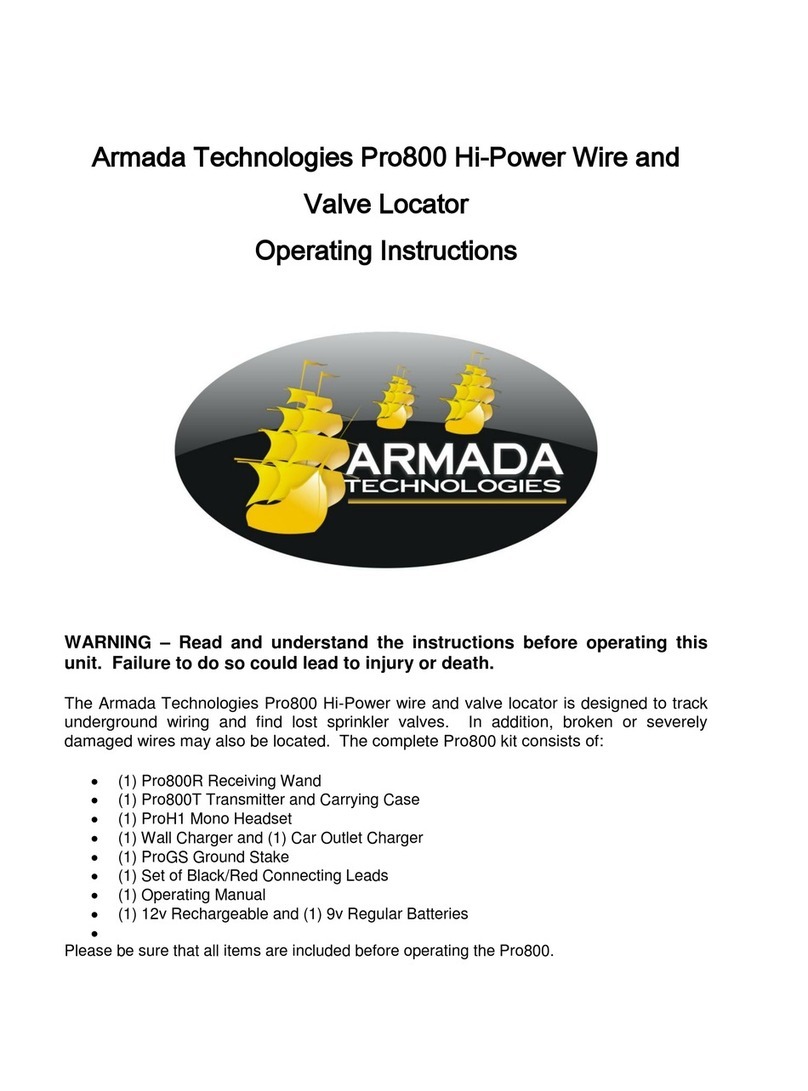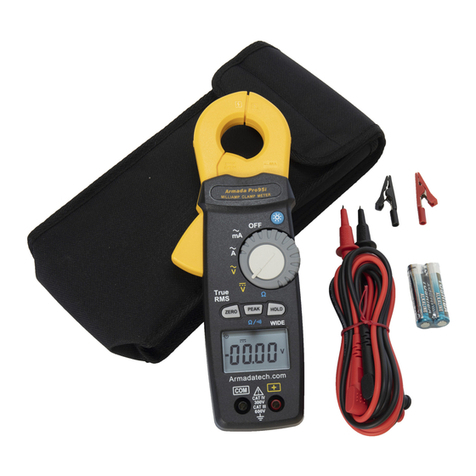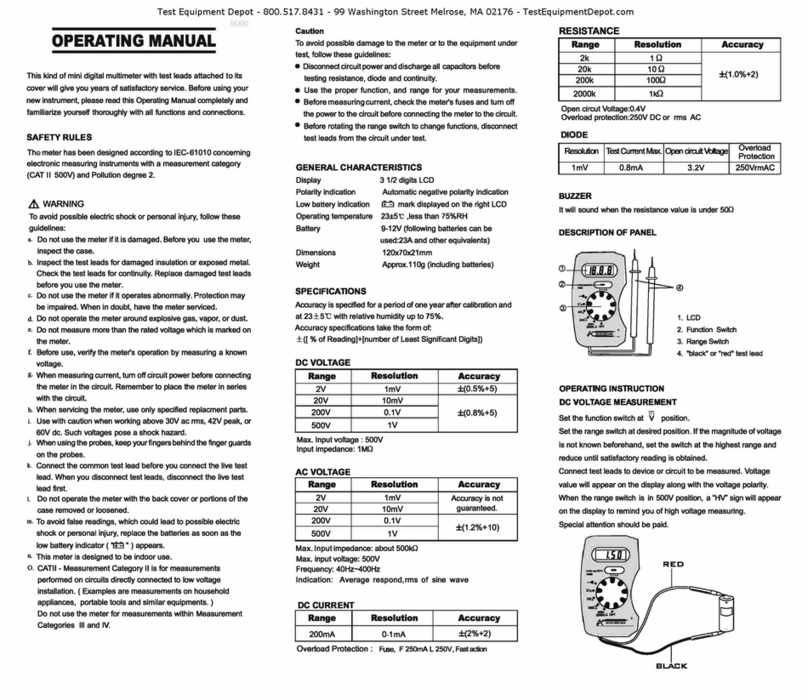Armada Technologies Pro900 LOCATOR USER GUIDE
3
Introduction: Theory of Locating - Cable locators consist of a
transmitter and a receiver. In the case of the Pro900 model, the
transmitter is in the long gray box and the receiver is a yellow and black
wand. In operation, a transmitter places a specific tracing signal onto
the metallic conductor you are trying to locate. This placing of an AC
signal onto a cable produces an electrical current and an
electromagnetic field around that cable. If the wand is close enough,
this signal is received and amplified by the wand.
It is very important to understand that the circuit you are creating follows
the laws of physics and electricity. A cable transmitter creates an
electrical current (AC) that travels down the cable, through grounding to
the earth, and then back to the transmitter through the ground stake.
The tracing signal will always travel on the path of least resistance. If
there is too much resistance or no circuit path, no current will flow and
no locate will be possible. So keep in mind that when a signal is heard,
it is because the signal has a complete path that is creating an
electrically friendly way for the signal to travel back to the transmitter.
The signal doesn't just randomly wander through the dirt. It follows a
path provided for it, whether it is a pipe, wire, reinforcing bar, etc.
It is also important to note that in the tracing circuits, a return path needs
to be present. Basically, the return path completes the circuit. In most
cases, this will be the earth ground as the signal transmits down the
cable and returns to the ground stake. However, any return is possible,
so a common wire could work. Or if you have a looped wire, like a dog
fence, the loop itself returns to the start and therefore provides a
'ground' instead of the ground stake. You don't have to use a ground
stake but you do have to give the signal a way to return to the
transmitter.
Power –The Pro900 has two options for powering the transmitter;
AC mains power or internal batteries. The AC adapter is useful
when 120 Vac power outlets are available nearby. The adapter
provides constant power and does not diminish batteries. To use
the AC adapter, simply insert the round plug of the adapter into
the “12 V” external power receptacle on the transmitter panel and













